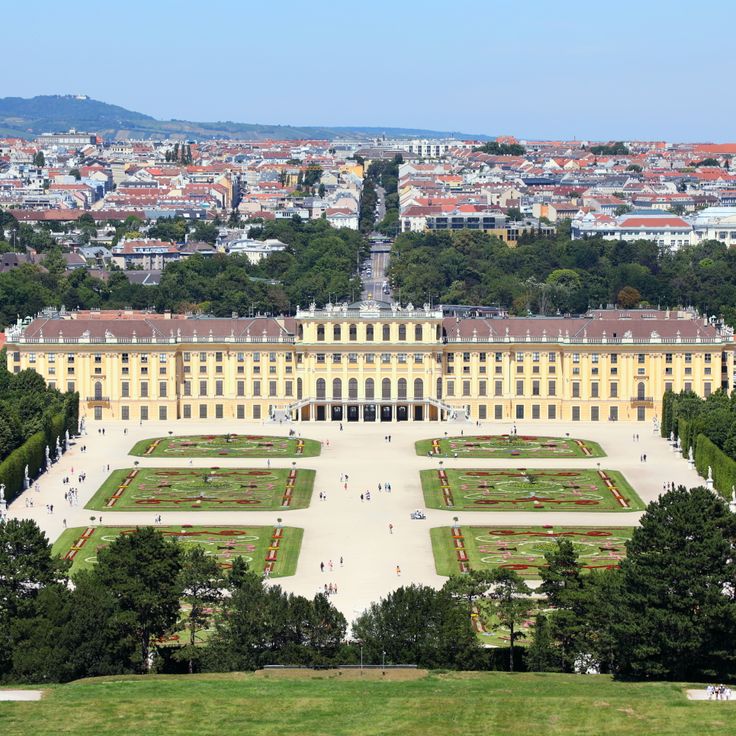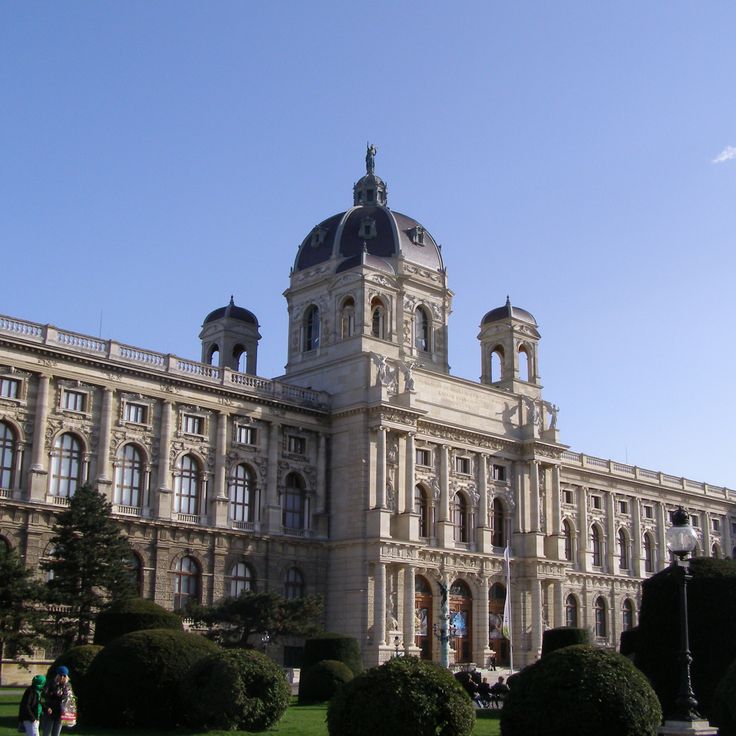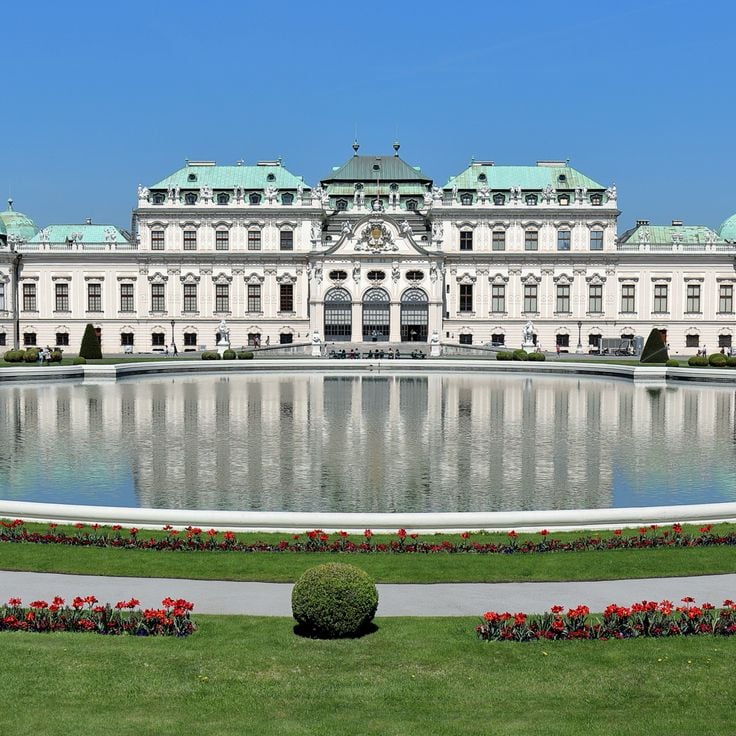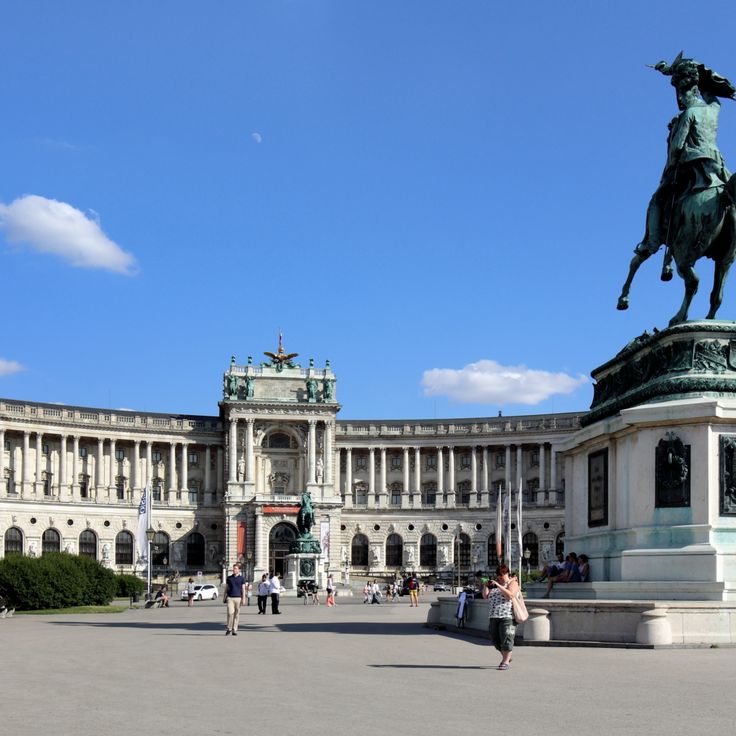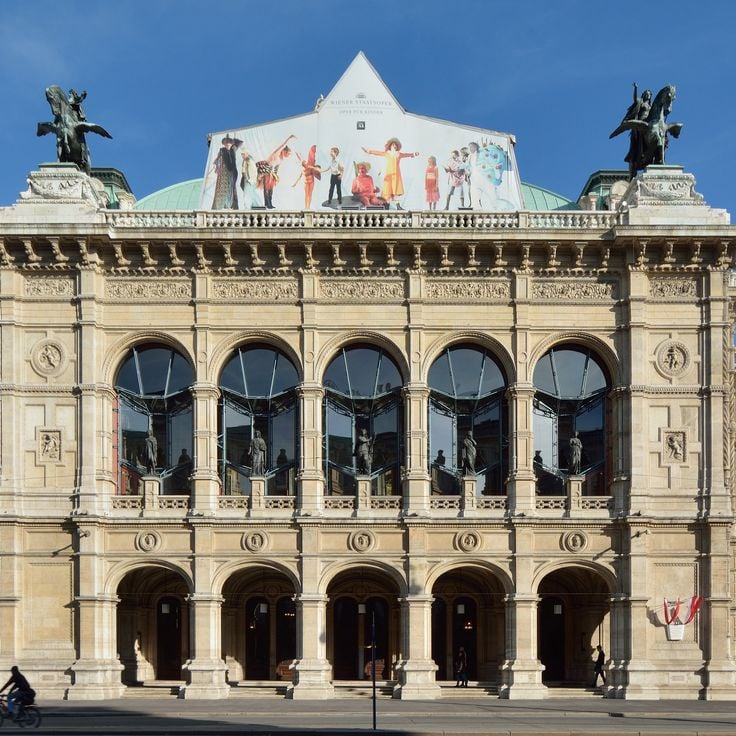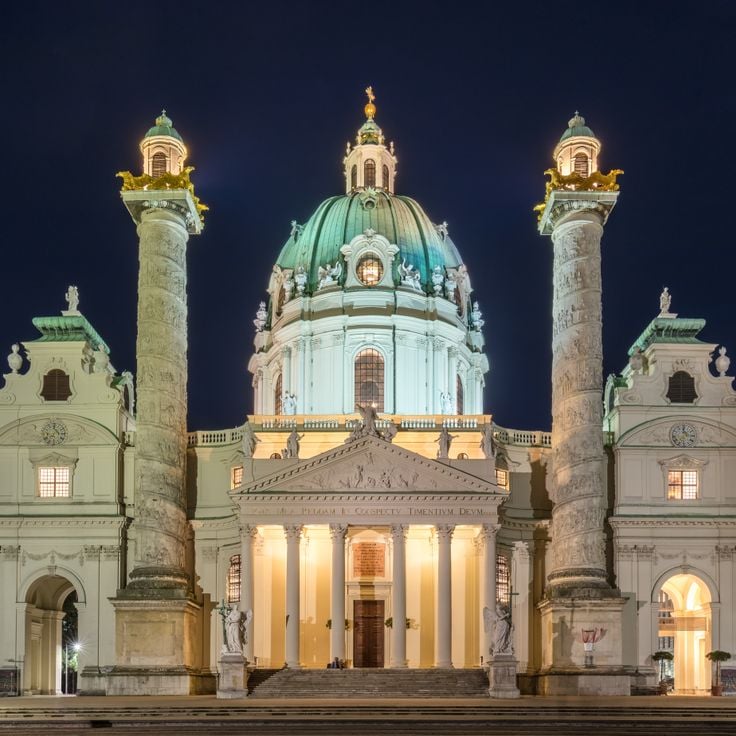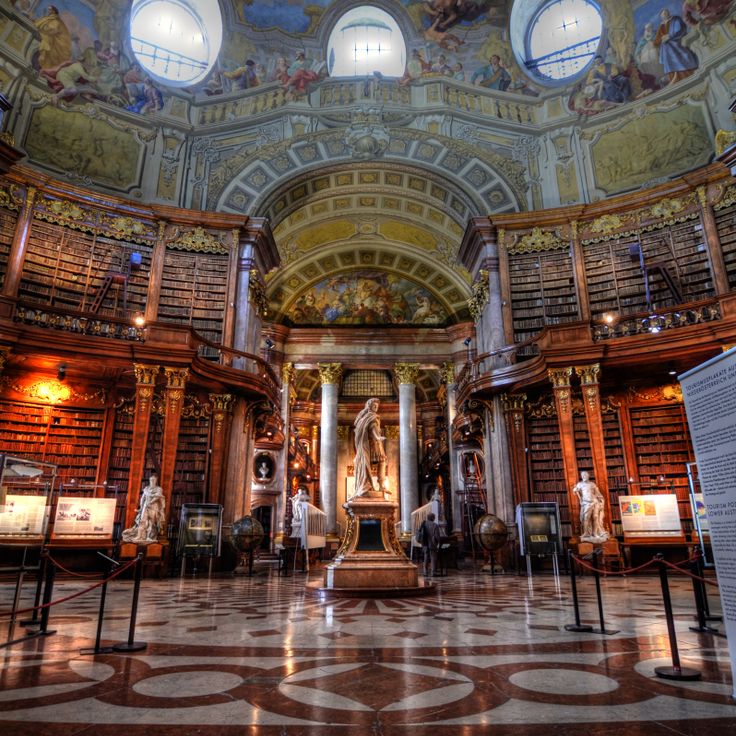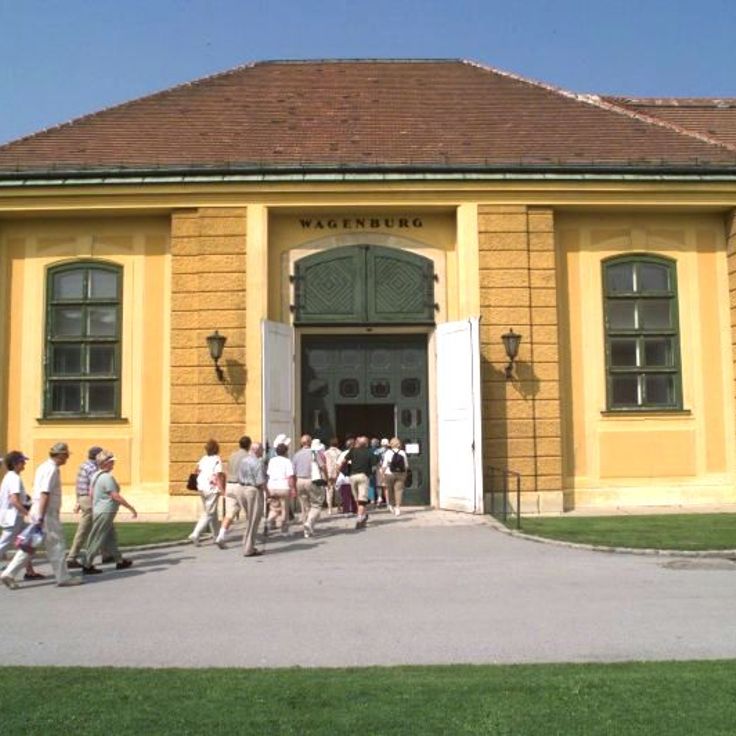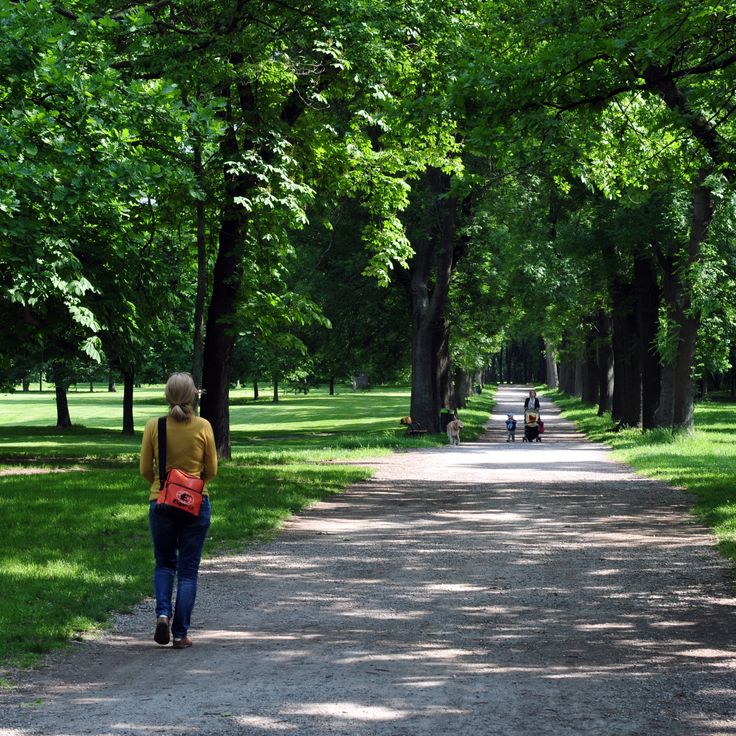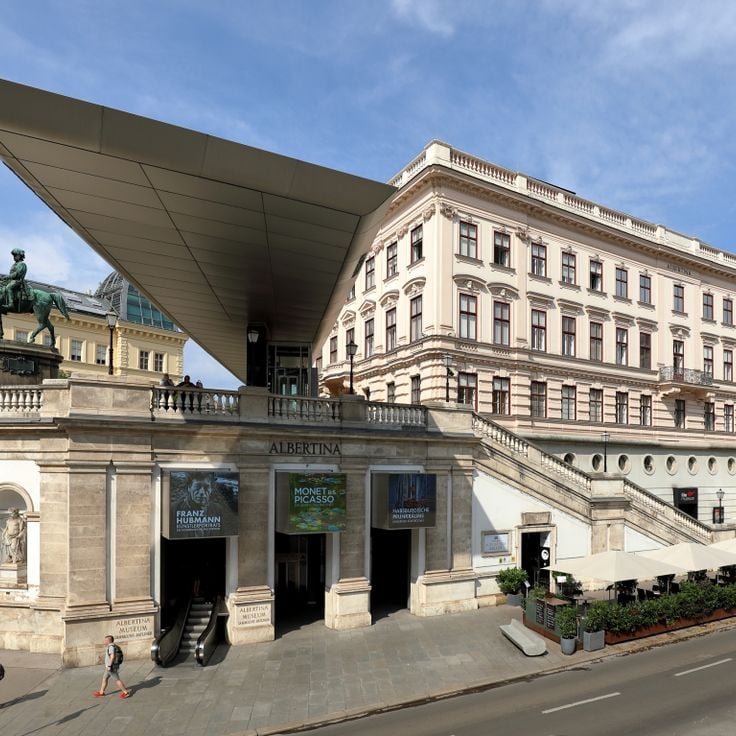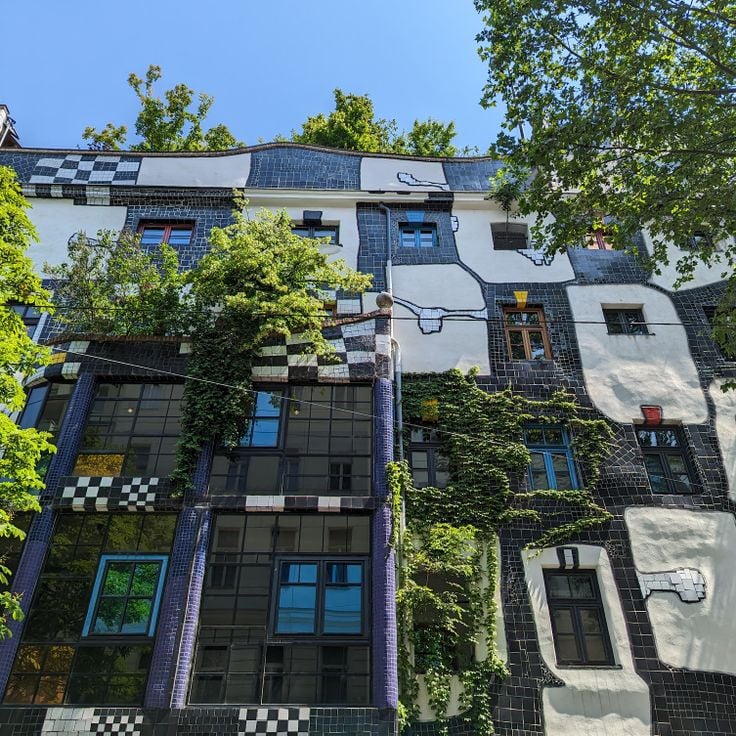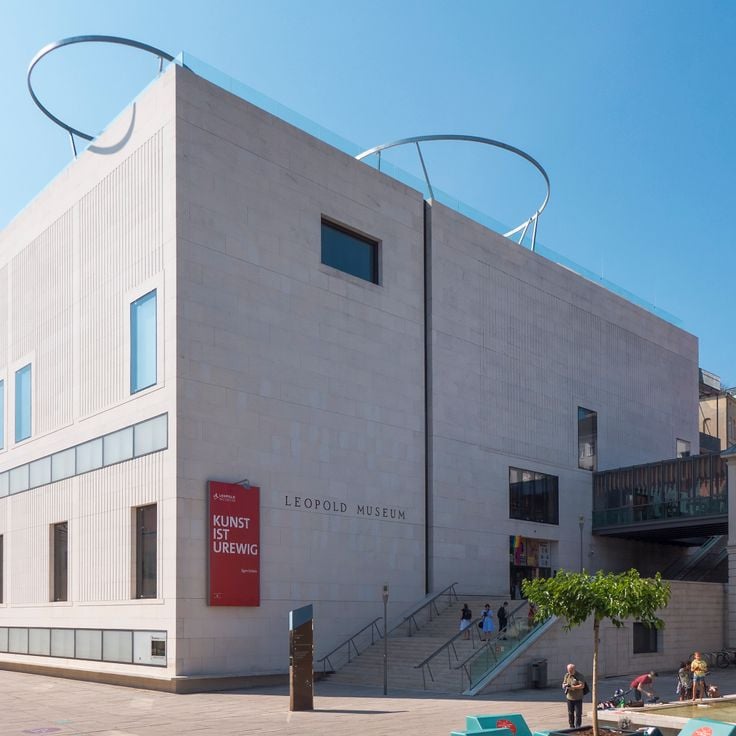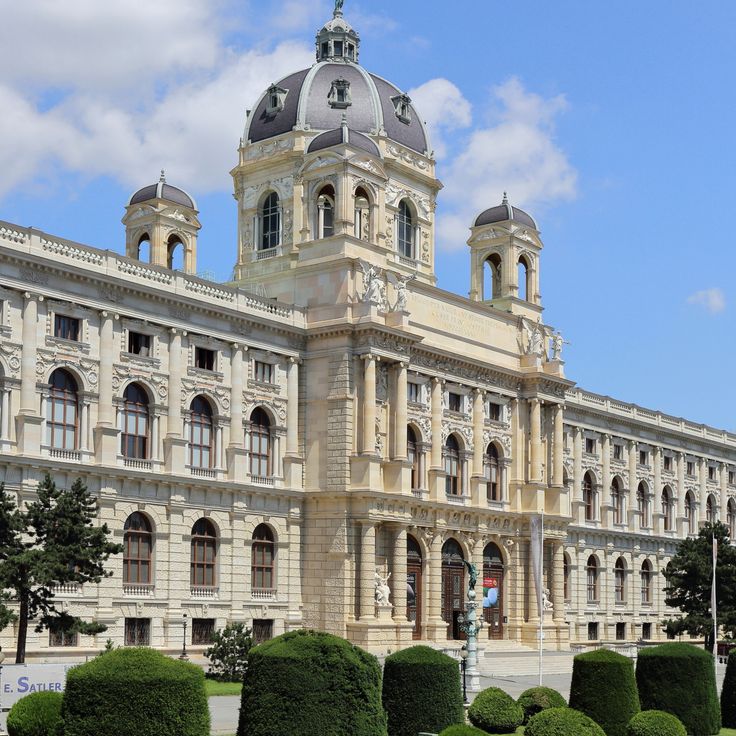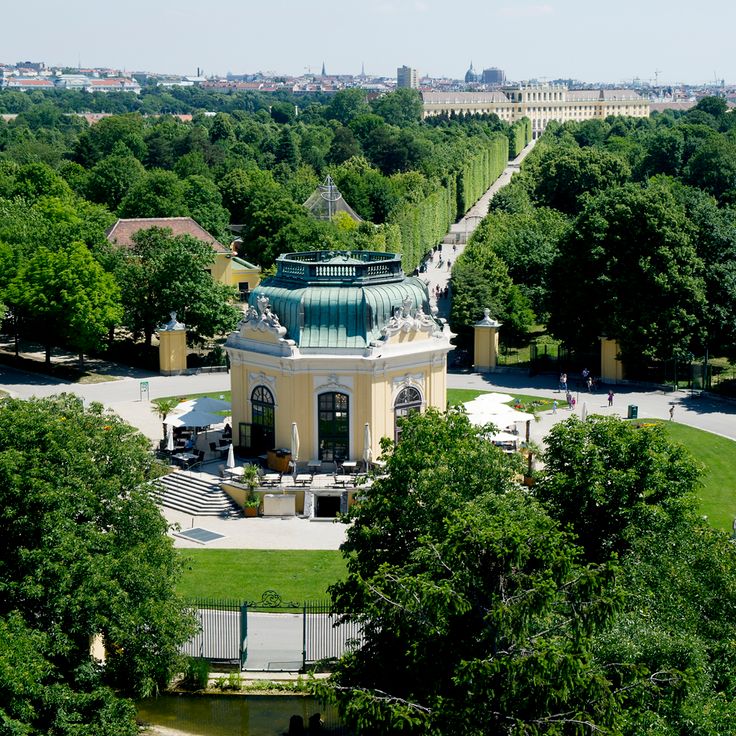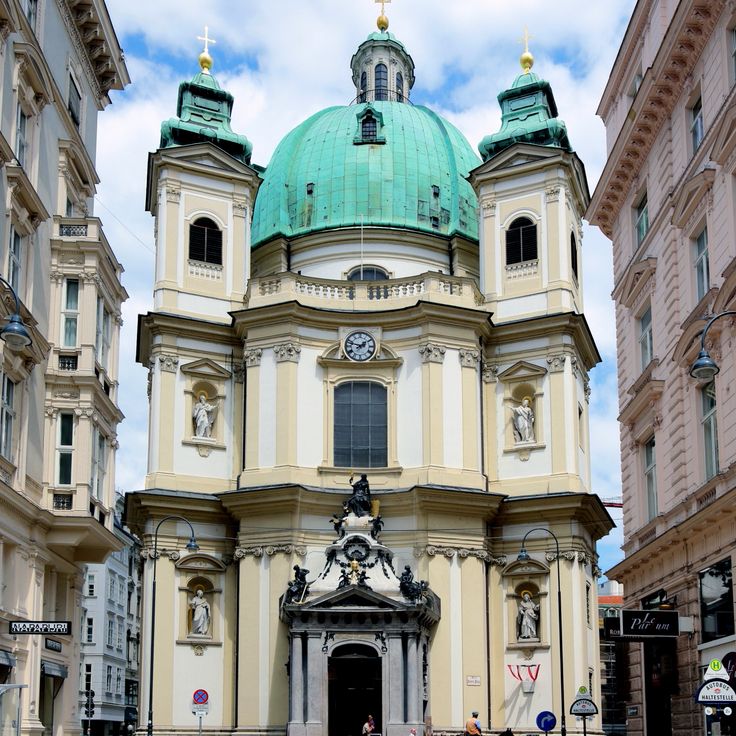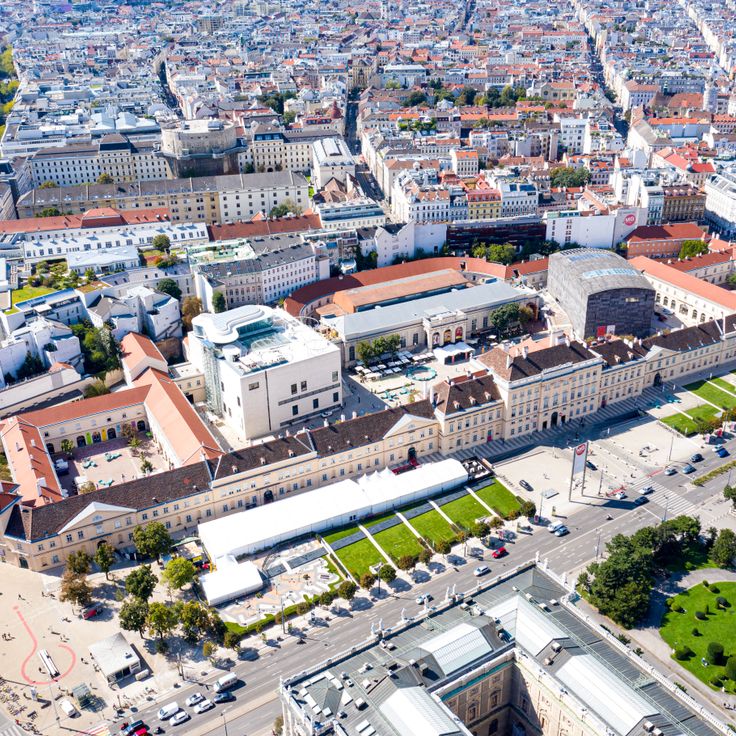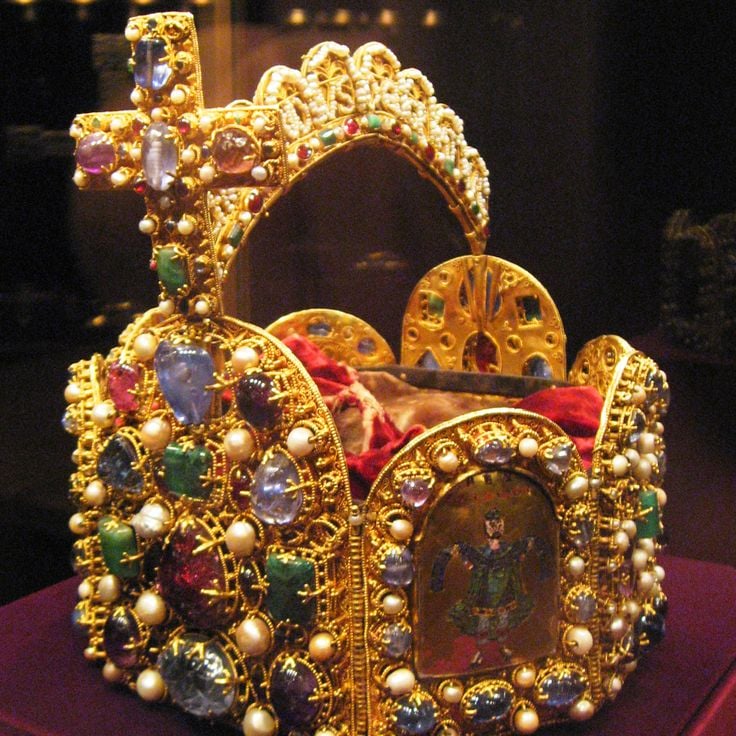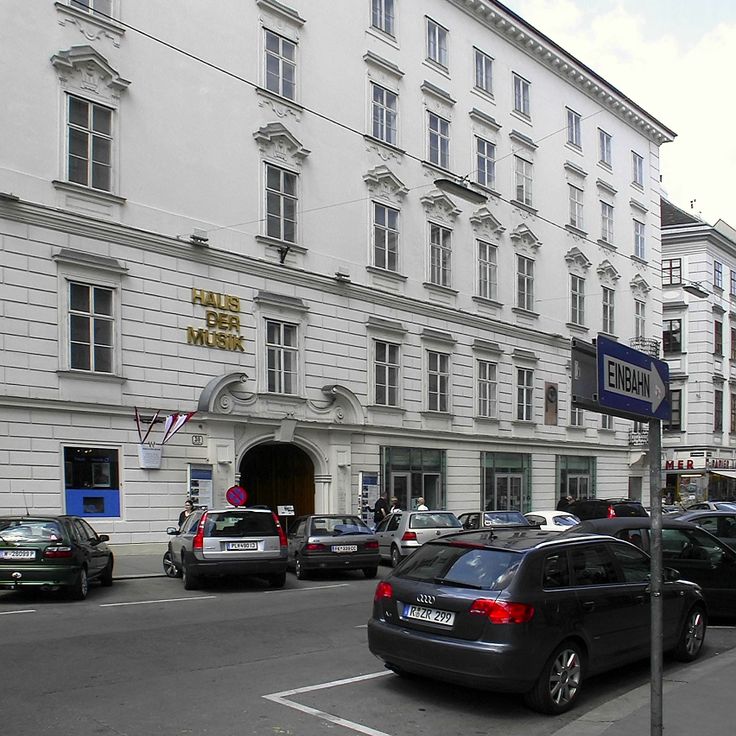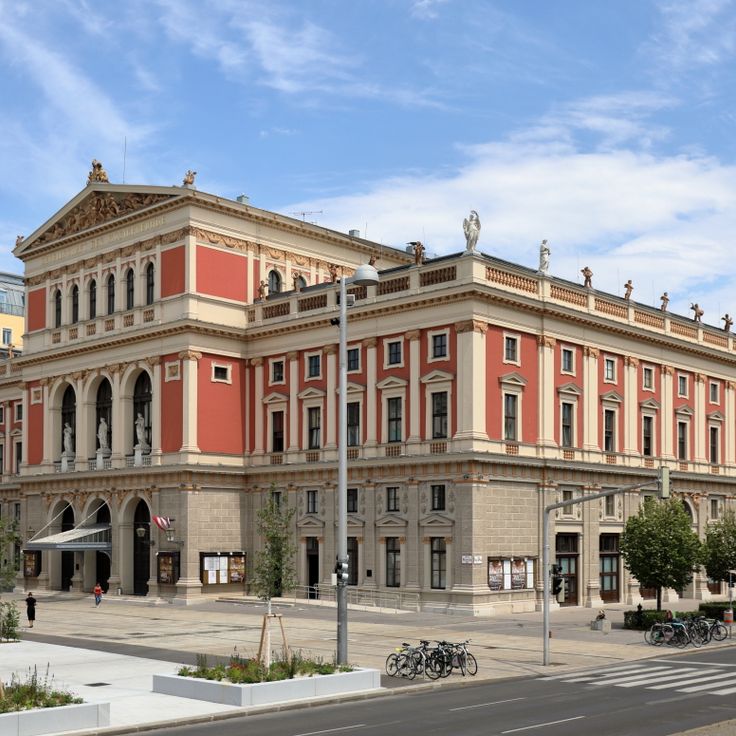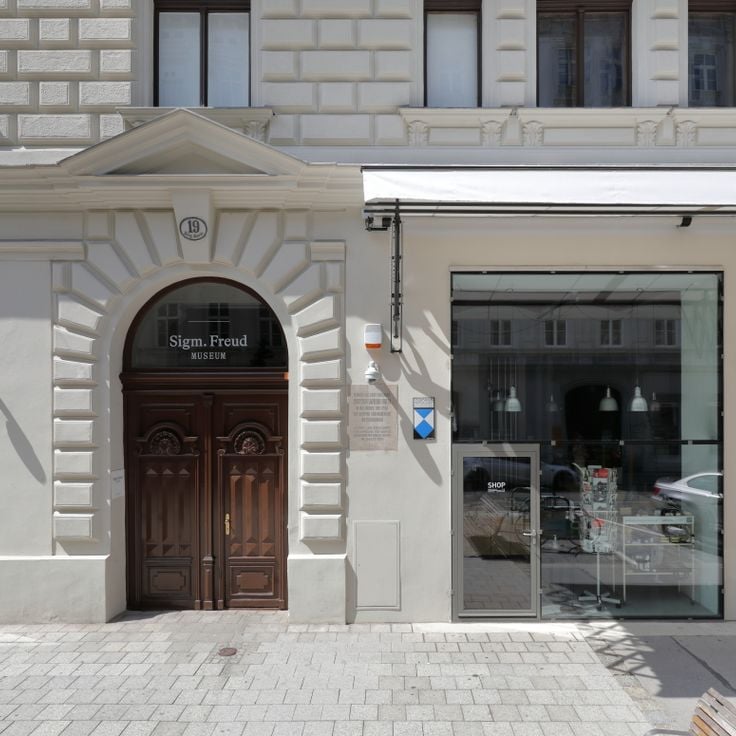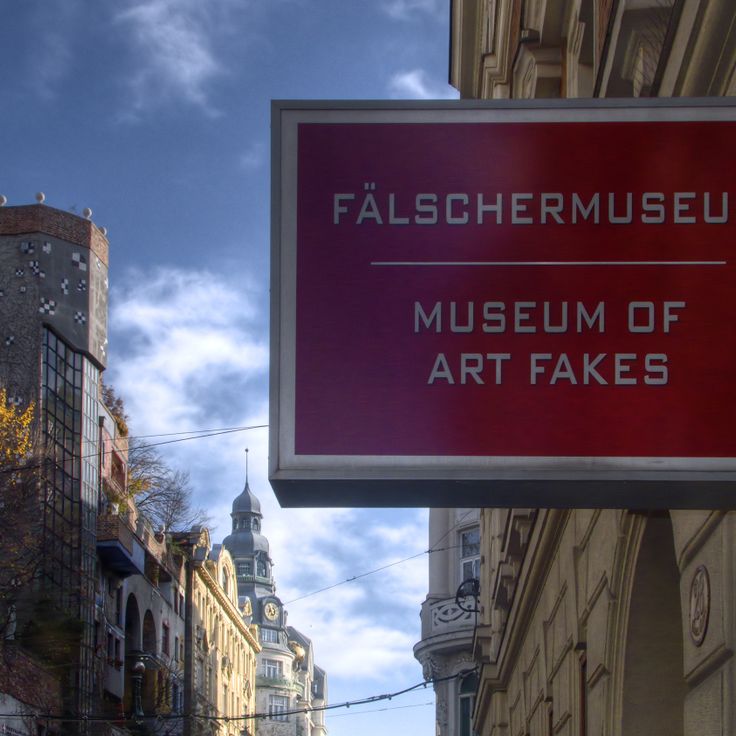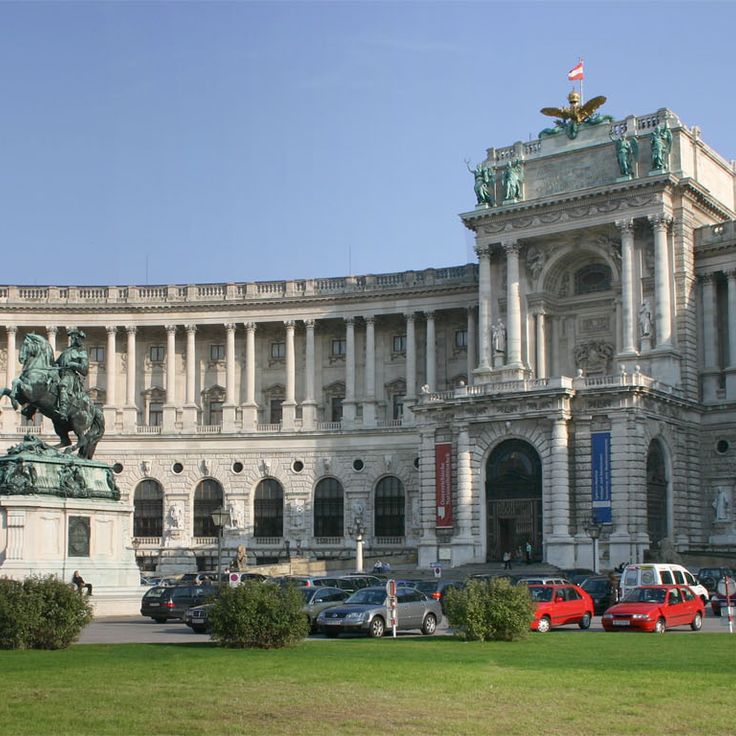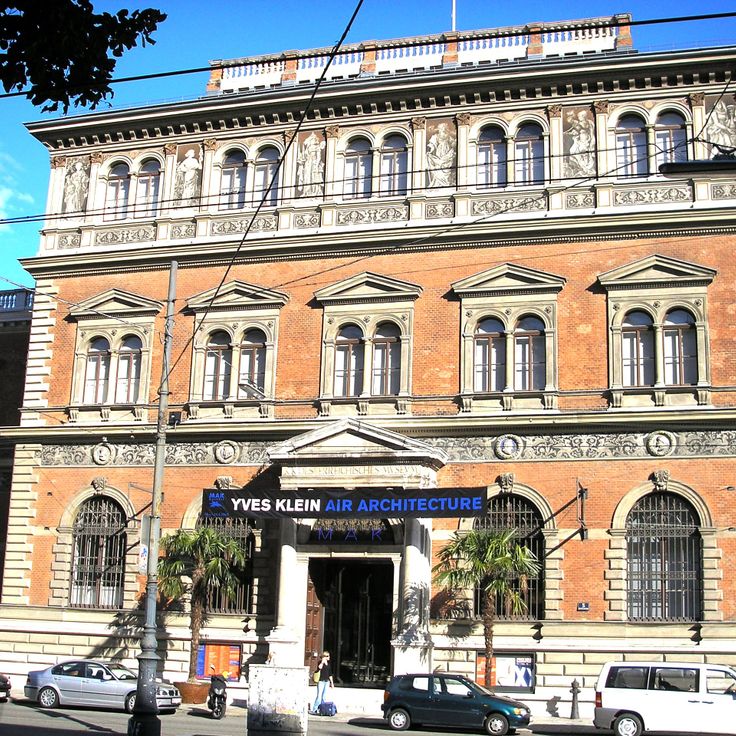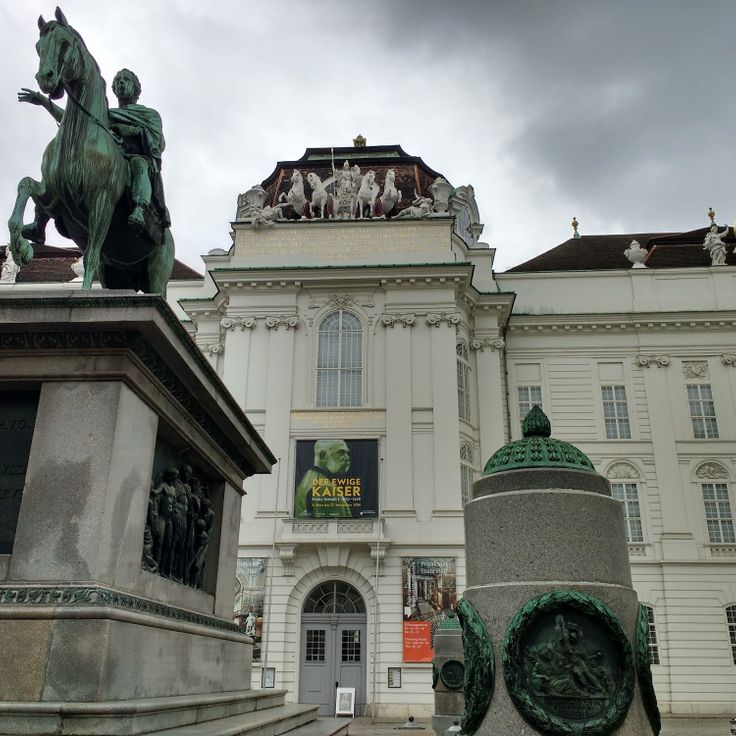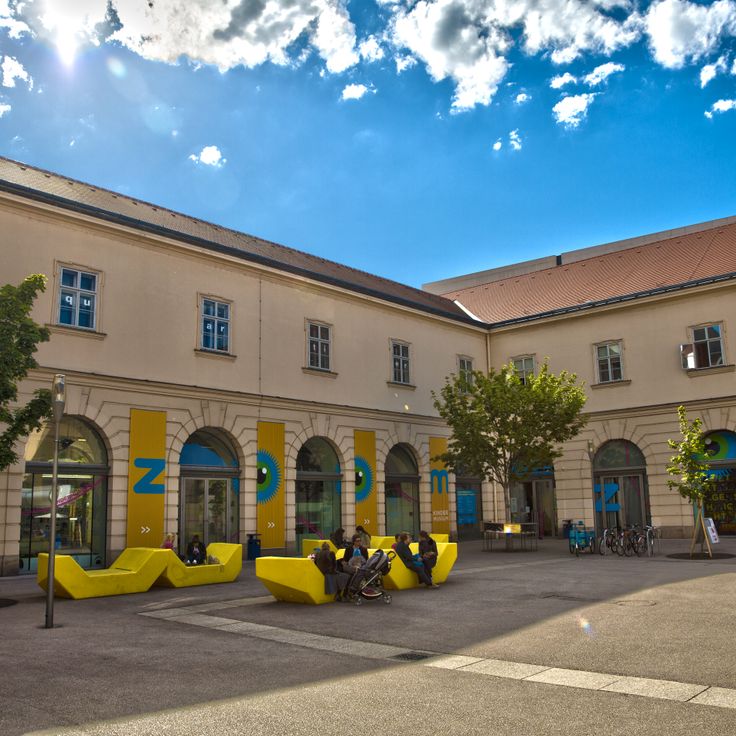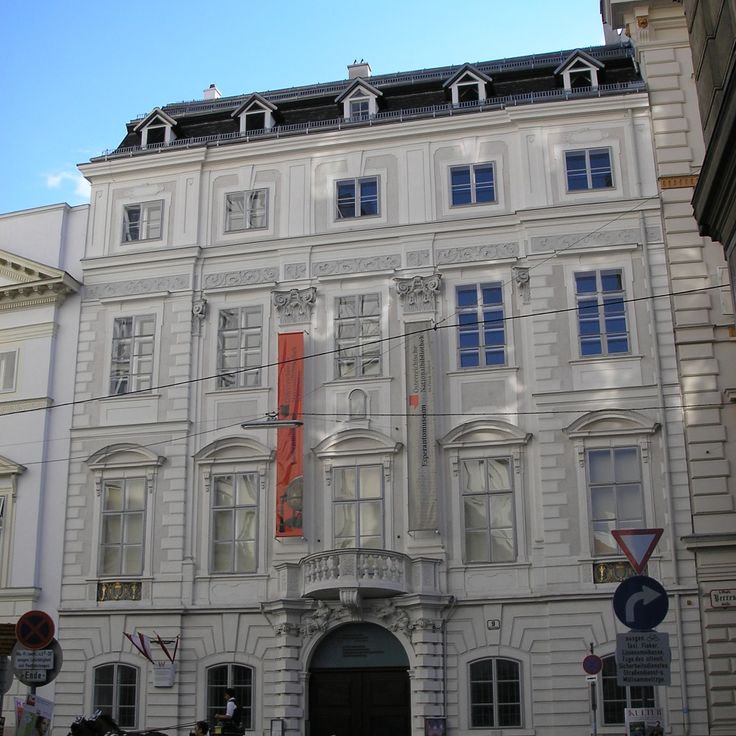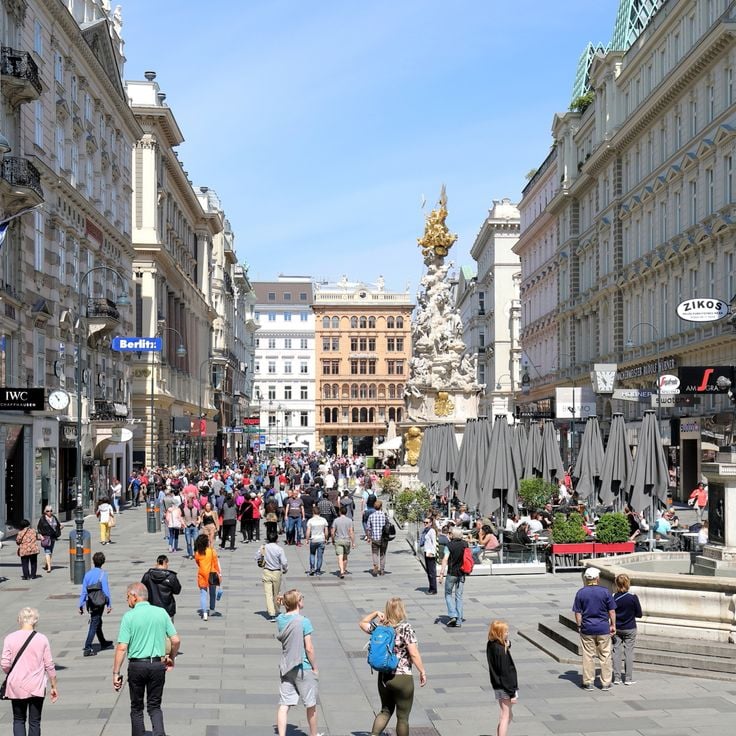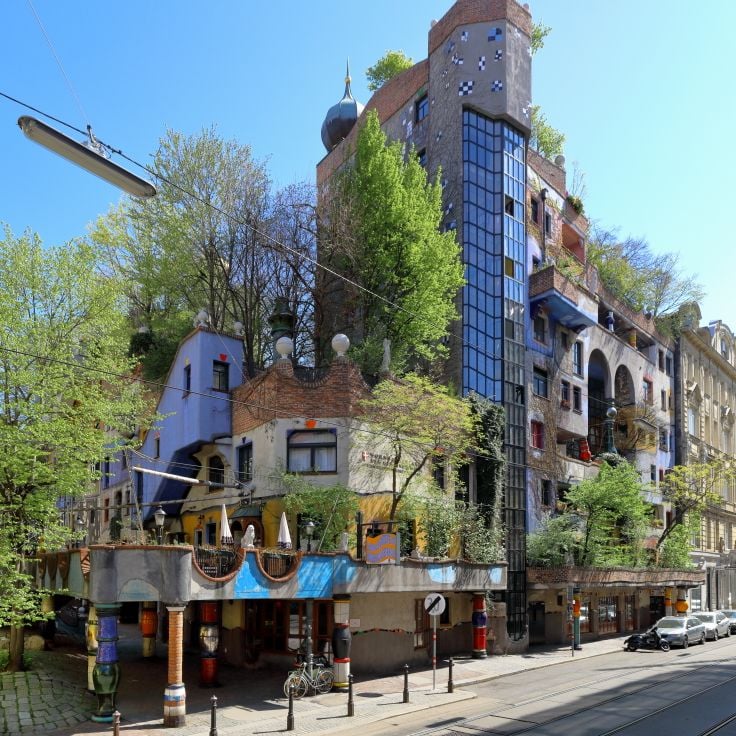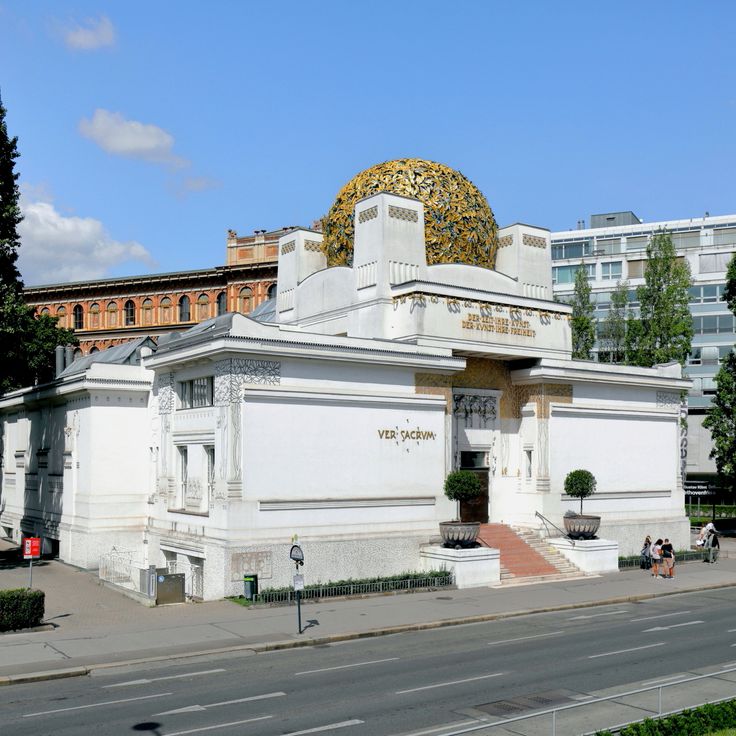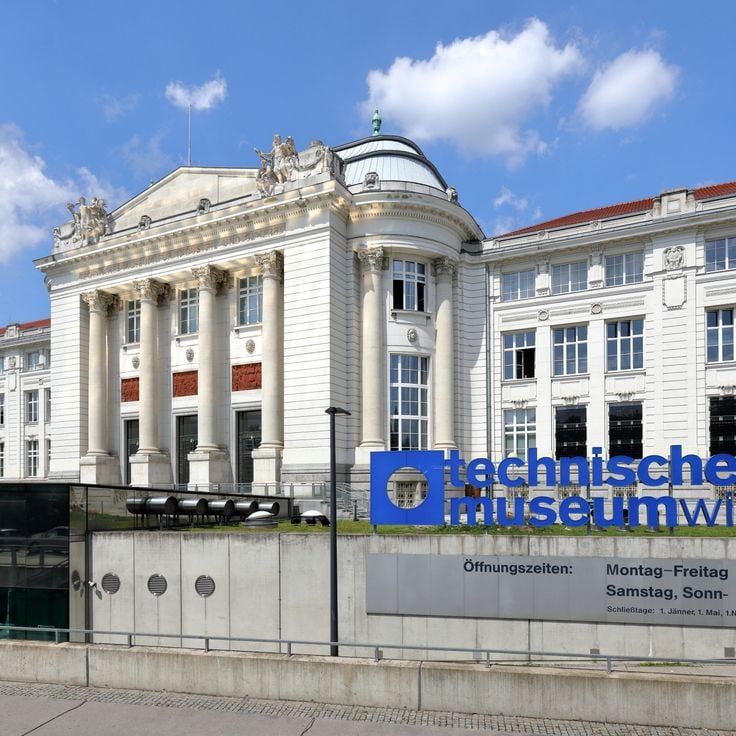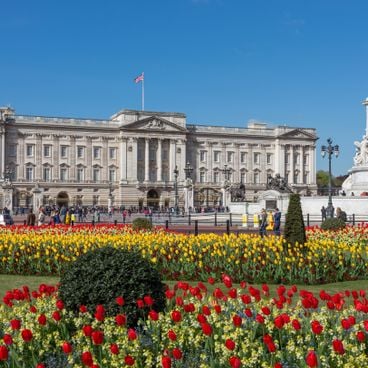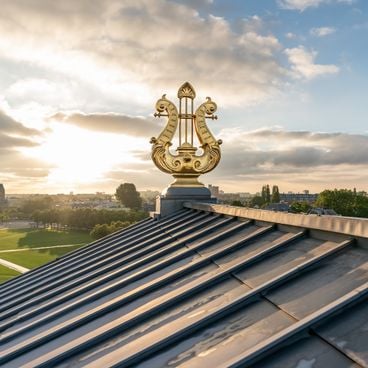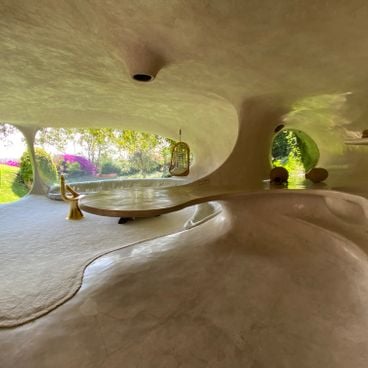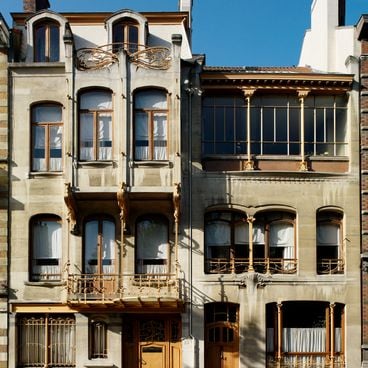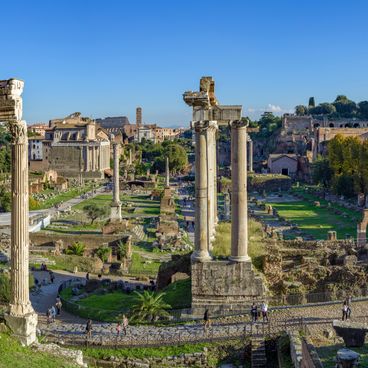Vienna's grand palaces, museums, and churches tell the story of a city that shaped European history. From the imposing Schönbrunn Palace where emperors once ruled to the Kunsthistorisches Museum's world-class art collections, from the soaring St. Stephen's Cathedral to the elegant Vienna State Opera, these landmarks sit at the heart of the Austrian capital. They are the places where Vienna announces itself to the world. But there is more to discover beyond these famous addresses. The city also harbors smaller, unexpected museums and collections that reveal the character of Vienna in different ways. The Carriage Museum holds centuries of imperial vehicles. The Prater offers open green space and a touch of old Vienna. The National Library's Baroque reading rooms feel like stepping into history. These places, both celebrated and lesser-known, paint a complete picture of who Vienna was and who it remains today.
Schönbrunn Palace is a Baroque imperial palace with 1441 rooms that shows the power and wealth of Austrian rule. With its carefully designed gardens, orangery, and the world's oldest zoo, Schönbrunn lets you experience the splendor of imperial times directly. Its place in this collection reveals how such palaces shaped European history and underscore Vienna's position on the world stage.
The Kunsthistorisches Museum displays an expansive collection of European artworks spanning the 13th to the 19th century, alongside Egyptian, Greek, and Roman antiquities. As one of the world's greatest art museums, it reveals the artistic treasures the Habsburgs gathered over centuries. The building itself commands attention, with grand halls and staircases that feel like walking through an imperial palace. Paintings, sculptures, and ancient objects tell stories of the cultures that shaped Europe. Visitors encounter Old Masters like Bruegel and Velazquez alongside classical works from Greece and Rome. The museum shows how Vienna became a center of European art history.
This 18th-century baroque palace complex fits naturally into Vienna's story as a capital shaped by grand architecture and art collections. The Belvedere consists of two palaces connected by French gardens and houses paintings by Klimt and Schiele. It shows how architecture and art came together to reflect the power and taste of those who built it.
St. Stephen's Cathedral is a Gothic structure that has shaped Vienna's center since the 12th century. Its pointed spire rises 137 meters into the sky and can be seen from all over the city. Inside, masses and organ concerts echo under carved stone vaults. The cathedral reveals how important the Church was to Vienna's history and continues to be today. Visitors step into a place where faith and craftsmanship meet.
The Hofburg is a grand palatial complex in Vienna's city center that has housed royal apartments, museums, the national library, and the Austrian president's offices since the 13th century. It stands as one of the major landmarks that tells Vienna's story as a capital that shaped European history. Within its walls, you find the layers of different centuries in both its architecture and purpose, from the grand rooms where emperors ruled to the collections that preserve artistic treasures. Walking through the Hofburg helps you understand how Vienna developed into the city it is today.
The Vienna State Opera is a neoclassical opera house that opened in 1869 with architectural elements in the Italian Renaissance style. The main hall holds about 2,200 seats and hosts performances throughout the year. This building ranks among Vienna's most important venues for music and culture, reflecting the city's deep connection to classical music and its role in shaping European cultural history. The opera house draws audiences from around the world who come to experience performances in one of the continent's most respected theaters.
St. Charles Church stands on Karlsplatz as a Baroque building completed in 1737. Its most striking feature is the 72-meter-high dome at its center, flanked by two towers and fronted by a portico with Greek columns. This church is part of Vienna's grand architectural story, which reveals how the city shaped European history. It represents a place where faith, art, and power came together, and where Vienna demonstrated its importance to the world.
The National Library in the Hofburg reveals how Vienna shaped itself as a center of learning and culture. Its large octagonal reading room, crowned with a dome and adorned with statues, has held seven million books and documents since 1723. Walking inside, you step into centuries of accumulated knowledge. The Baroque architecture and carefully arranged shelves tell the story of a city that valued education and scholarship. This is where Vienna's intellectual life took root and grew.
This museum displays ceremonial carriages, sledges, and berlins belonging to the Habsburg family, including the imperial coronation carriage. It stands as one of Vienna's smaller collections that reveals the character of the city in unexpected ways. While grand palaces and major museums announce Vienna to the world, this museum preserves centuries of imperial vehicles and shows the splendor of the court through the eyes of those who traveled in such carriages. Here you see how the ruling family moved through the world and presented itself.
The Prater is a large public park in the heart of Vienna that represents the character and history of the Austrian capital in this collection. This site was once an imperial hunting ground and opened to the public in 1766. Today visitors find green spaces, walking paths, and a permanent amusement fair with rides and restaurants. The Prater gives a sense of Vienna as it was in earlier times while offering space to spend time and enjoy the outdoors. With its expansive green areas, it shows how the city has evolved from a royal preserve into a place where people gather to relax and spend their days.
The Albertina stands in Vienna's city center as a palace from the 18th century that tells stories of art and power. Inside, more than a million works of art fill the rooms, from careful drawings and prints to paintings by modern artists. Walking through these halls, visitors see how artists worked across centuries and how their ideas evolved. The palace itself shows what imperial Vienna looked like, while the collections demonstrate how art connects people across time.
The Kunst Haus Wien displays the works of artist Friedensreich Hundertwasser in a building with unconventional architecture. This museum is part of Vienna's story as a place where the city reveals its artistic character. Visitors find permanent collections and changing exhibitions of contemporary art here. The building itself is a work of art, with bright colors, wavy walls, and surprising details at every turn.
The Leopold Museum in the MuseumsQuartier houses a large collection of Austrian art from the early 20th century. The museum displays works by painters of the Vienna Secession, a movement that reshaped how artists thought about form and beauty. Through these paintings and objects, you can see how Vienna became a center for artistic innovation during a transformative period in European history.
The Natural History Museum represents Vienna's scientific character within this collection of significant places. Its 30 million specimens and objects, from dinosaurs and minerals to the celebrated prehistoric limestone Venus figurine, tell the story of Earth and its inhabitants. Standing alongside the grand palaces and churches that shaped European history, this museum reveals a different way Vienna announces itself to the world.
The Tiergarten Schönbrunn was one of the first modern zoos created in 1752 within the grounds of Schönbrunn Palace. As part of this collection of places that reveal Vienna's history, the zoo offers a special window into the city's imperial past. Visitors can see over 700 animal species here, including giant pandas and koalas. The Tiergarten blends the Habsburg love of nature with their scientific curiosity and shows how emperors and their courts understood the world.
St. Peter's Church is a Baroque building completed in 1733 in Vienna's city center. Its green dome stands out against the skyline. Inside, frescoes and gilded sculptures fill the space with crafted beauty. As a religious building, this church tells of Vienna's long history and shows how the city preserves what has come before.
The MuseumsQuartier shows Vienna's ability to transform itself. Built on the grounds of the Austrian court's former stables since 2001, this cultural center brings together contemporary art and culture in one place. Here you find the Leopold Museum with its Austrian treasures, MUMOK for modern art, and the Kunsthalle for rotating exhibitions. The MuseumsQuartier represents Vienna's other side - not the one of palaces and classical monuments, but one of creative energy and artistic diversity that shapes the city today.
The Imperial Treasury at the Hofburg displays the regalia of the Holy Roman Empire and the crown jewels of Austria, sitting alongside ornaments of the Order of the Golden Fleece. These treasures span centuries and speak directly to Vienna's role as the seat of power that shaped European history. Walking through these rooms, you encounter the symbols of imperial rule and the objects that once adorned the heads and hands of the rulers who governed from this very palace. They offer a tangible connection to the grand history that Vienna itself announces to the world.
The Haus der Musik shows across five floors how music is created and why Vienna holds such importance for classical music. Visitors can conduct their own virtual orchestra and learn how sound and tones work. The museum tells the story of the great composers who lived and worked in Vienna. It is a place that brings music to life and reveals how deeply it is woven into Vienna's past.
The Musikverein is a concert hall in Vienna's city center, built in 1870. It is home to the Vienna Philharmonic Orchestra and hosts the famous New Year's concert each year. The building reflects the grandeur of Austrian musical history and stands as one of the places that defines Vienna's role as a cultural capital. Visitors experience here the tradition and elegance that shaped Vienna as a center of European music.
The Sigmund Freud Museum occupies the consulting room and residence where the founder of psychoanalysis lived and worked from 1891 to 1938. The museum preserves original furniture, photographs, and documents from these rooms. This place tells the story of a man whose ideas transformed European thinking. Within the context of Vienna's celebrated landmarks and hidden collections, the Freud Museum reveals how revolutionary thought took shape in the intimate spaces of a city that shaped modern history.
The Museum of Counterfeiting presents an unusual collection of imitations and copies of famous objects from around the world. It focuses on the study of artistic and historical counterfeits, offering visitors an unexpected look at a subject often overlooked. This museum is one of Vienna's smaller, surprising institutions that reveal the character of the city in unconventional ways, complementing the grand palaces and major museums that tell the story of how Vienna shaped European history.
This ethnological museum in the heart of Vienna holds over 200,000 cultural objects and documents from all continents. The collection includes masks, costumes, and traditional musical instruments that reflect the daily life and traditions of different cultures. As part of Vienna's major museum landscape, the Weltmuseum Wien reveals the range of human cultures and complements the city's renowned art collections.
This museum was founded in 1863 and shows an international collection of decorative arts, crafts, design, and architecture from the Middle Ages to today. Within Vienna's grand palaces, museums, and churches that tell the story of European history, this place offers another perspective. The Museum of Applied Arts reveals how craftsmanship and design shaped the way people lived and worked. Walking through its rooms, you see the art and beauty that existed in everyday life.
The MUMOK within the MuseumsQuartier demonstrates how modern art shaped Vienna's cultural narrative. Housing about 10,000 artworks spanning the 20th and 21st centuries, this museum displays cubism, surrealism, and conceptual art. The building's dark basalt exterior contrasts sharply with Vienna's grand palaces and baroque churches, revealing a different facet of the city's artistic treasures. Here you encounter how contemporary artists have challenged and reimagined visual expression.
The Jewish Museum tells the story of Vienna's Jewish community across centuries, from the Middle Ages to today. Its collection holds objects and documents that reveal how people lived, what they valued, and how they shaped the city. Walking through the rooms, you encounter personal histories and traditions that form an important part of Vienna's past and present.
ZOOM Children's Museum in the MuseumsQuartier invites young visitors to explore the world through play and discovery. The museum features rooms where children can experiment, engage in creative activities, and learn from scientific displays. It represents Vienna's commitment to making culture and learning accessible to everyone, not just adults. Within this collection of places that reveal Vienna's character, ZOOM shows how the city welcomes families and nurtures curiosity in its youngest residents.
The Globe Museum in Palais Mollard houses Europe's largest collection of geographic and astronomical globes. The objects span from the Renaissance to modern times, offering insights into how people understood and mapped the world across centuries. This museum exemplifies Vienna's character as a city that preserves specialized collections alongside its famous palaces and opera houses, revealing the breadth of knowledge and curiosity that shaped the Austrian capital.
Café Central sits in the heart of Vienna and reflects the city's cultural richness. Located within Ferstel Palace, it features vaulted ceilings and marble columns that create an inviting setting. Since opening in 1876, the café has been a gathering place for writers, artists, and thinkers. The rooms carry the weight of history and encourage visitors to linger. Here you can experience how Vienna felt in earlier times and understand why this café remains so central to the city's identity.
The Museum of Illusions in central Vienna presents over 70 interactive installations that explore how our eyes and brains work together. You walk through rooms filled with optical tricks and visual puzzles, each space designed around its own theme. Every corner invites you to test your perception and see how easy it is to fool your senses. You can photograph what you experience. Among Vienna's grand palaces, museums, and churches that show the city's imperial past, this museum adds a lighter, playful side to discovering what the Austrian capital has to offer.
The Graben is a major historic pedestrian street in Vienna's city center that has existed since the 12th century. It shows how the city developed over time and what role trade and public spaces played in Vienna's history. The street is lined with classical Viennese buildings and holds international boutiques, cozy cafes, and the striking Plague Column. As part of Vienna's larger collection of palaces, museums, and churches, the Graben reveals the everyday life of the city beyond its most famous landmarks and demonstrates how Viennese people and visitors use public space.
Hundertwasserhaus is a residential building designed by architect Friedensreich Hundertwasser. It features colorful façades with uneven floors and asymmetric columns that incorporate living plants. Unlike the formal palaces and museums that shape Vienna's story, this building reveals a different side of the city. It embodies creative independence and a playful approach to architecture, showing one of Vienna's many cultural faces.
The Secession Building at Karlsplatz represents a different Vienna, one that stepped away from imperial grandeur to embrace something fresh and modern. This structure, built in 1898, stands as the heart of the Vienna Art Nouveau movement. Its golden laurel-leaf dome catches the eye immediately, while white walls adorned with geometric patterns create a clean, striking appearance. The building shows how artists and architects of that era reimagined the city's visual language.
The Technical Museum displays the history of industry and technology from the 19th century to today. Here visitors can see historical machines, railway vehicles, and airplanes and understand how these inventions changed people's lives. The museum tells how Vienna and Austria were part of Europe's technological development. It is a place to see how innovation and craftsmanship came together.
